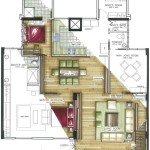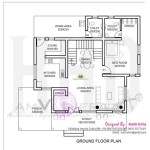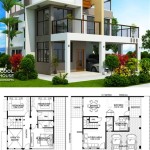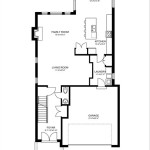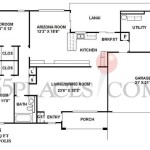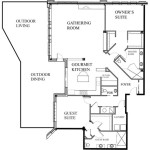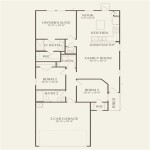Container House Floor Plans 40 Ft
40-foot shipping containers offer a compelling option for building a modern, sustainable, and cost-effective home. Their robust structure, standardized dimensions, and inherent portability provide a foundation for diverse architectural designs. This article explores various floor plan considerations for 40-foot container homes, emphasizing the importance of optimizing space and functionality.
Key Considerations for 40-Foot Container Home Floor Plans
Several factors influence the design of a 40-foot container home. Understanding these key elements allows for a more informed planning process, leading to a functional and comfortable living space.
- Budget: Construction costs can vary depending on the complexity of the design, materials used, and local labor rates.
- Location and Climate: The local environment dictates necessary insulation, window placement, and overall design considerations.
- Lifestyle Needs: The number of occupants, their individual needs, and desired lifestyle influence the layout and allocation of space.
- Building Codes and Regulations: Adhering to local building codes and regulations is essential for obtaining necessary permits and ensuring structural integrity.
Single Container Floor Plan Options
A single 40-foot container provides approximately 320 square feet of living space. While this may seem limited, careful planning can create a comfortable living area for individuals or small families.
Studio Apartment Layout
This layout maximizes the open-plan concept, combining living, dining, and sleeping areas within the single container. A designated kitchen and bathroom area ensures functionality.
One-Bedroom Layout
A partition can create a separate bedroom area, offering more privacy. The remaining space can be designed to include a combined living, dining, and kitchen area, along with a bathroom.
Multiple Container Floor Plan Options
Connecting multiple containers expands the possibilities for larger homes with more complex layouts. The arrangement of these containers can create unique and dynamic living spaces.
Two-Container Parallel Placement
Positioning two 40-foot containers side-by-side allows for a wider living space, ideal for creating distinct zones for living, dining, and kitchen areas. Bedrooms and bathrooms can be placed on either side.
Two-Container L-Shaped Placement
An L-shaped configuration creates a natural division between public and private spaces. The two wings of the "L" can house distinct functional areas, such as a living area and a bedroom wing.
Four-Container Courtyard Design
Arranging four containers in a square or rectangular shape, with an open center, creates a private courtyard. This design maximizes natural light and offers a secure outdoor space.
Maximizing Space and Functionality
Regardless of the chosen layout, maximizing space and functionality is paramount in container home design. Strategic planning and innovative solutions contribute to a comfortable and efficient living environment.
Utilizing Vertical Space
Incorporating lofted areas for sleeping or storage maximizes vertical space, leaving more floor area for living and dining. High ceilings also contribute to a sense of spaciousness.
Built-in Storage Solutions
Integrating built-in storage solutions, such as under-stair storage, wall-mounted shelves, and built-in wardrobes, helps to declutter and optimize available space.
Large Windows and Openings
Maximizing natural light through large windows and strategically placed openings creates a bright and airy atmosphere. This also helps to visually expand the perceived space.
Outdoor Living Spaces
Extending living spaces outdoors with decks, patios, or balconies expands the usable area of the home. This provides additional space for relaxation and entertainment.
Choosing the Right Floor Plan
Selecting the appropriate floor plan depends on individual needs and preferences. Careful consideration of lifestyle, budget, and desired functionality is essential in making the right choice.
Assessing Lifestyle Needs
Understanding the specific needs and priorities of the occupants is crucial. Consider factors such as family size, work-from-home requirements, and entertainment preferences.
Considering Future Expansion
Planning for potential future expansion can save time and resources in the long run. Choosing a design that allows for easy additions or modifications provides flexibility for evolving needs.
Consulting with Professionals
Seeking advice from architects and engineers specializing in container home construction can provide valuable insights and ensure structural integrity and code compliance.
Exploring Design Software and Resources
Utilizing online design software and resources can aid in visualizing different layout options and experimenting with various design concepts before finalizing the floor plan.

Small Scale Homes 8x40 Container Home Design House Plans Cargo

40 Foot Container Containers Home Construction Plan House Plans Homes Accessory Dwelling Unit

Caoimhe 40ft One Trip Converted Container Selfcontained Ie

40ft Container House Floor Plans With 2 Bedrooms Home Designs

One Bedroom Bathroom 40ft Container House Floor Plan View Easy Build Houses Money Box P Building A Home Plans

40ft Container House Floor Plans With 2 Bedrooms

40 Foot Container Containers Home Construction Plan House Plans Homes Accessory Dwelling Unit

China Flat Pack House Wfph25121 Luxury 40ft Container Homes For Hotel Prefabricated Houses Manufacturer And Supplier Woodenox

40ft Container Home Containerhomes Net

40 Container Home Plans Eagle Leasing

